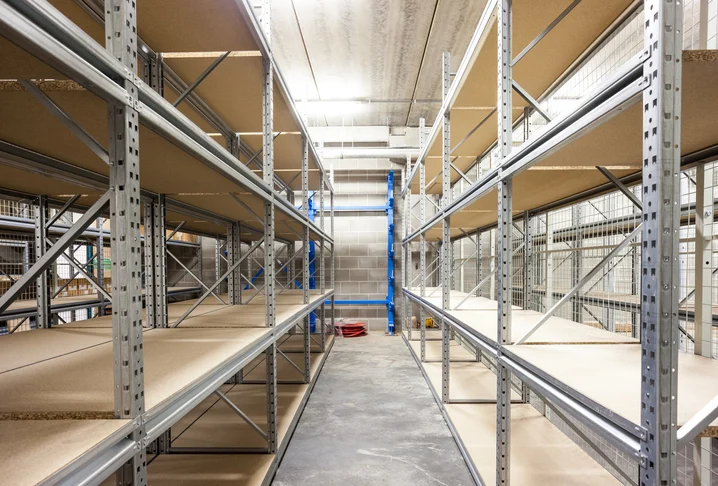Running out of your top-selling product is a nightmare for anyone in e-commerce. It is not just about losing sales. It can frustrate customers, hurt loyalty, and mean missing out on chances for repeat business. However, the good news is that you do not need to invest in pricey enterprise systems or complex supply chain strategies to prevent stockouts through e-commerce reordering.
That is, with some smart e-commerce reordering strategies, Shopify merchants can keep up with demand, keep their customers satisfied, and boost sales. What you need to do is set simple reorder points and alerts.
In this guide, we will break down how reorder points work, how to figure them out, and how a tool like Organizely can simplify and automate the whole process.

Why Stockouts Hurt More Than You Think
Running out of stock is more than just an inconvenience. For small online businesses, it leads to a chain of problems. That is why having a good Shopify inventory management system is a must.
Namely, if you do not have a solution to prevent stockouts, you will be faced with:
Missed revenue - Each day an item is unavailable means you are potentially losing sales.
Upset customers - If shoppers cannot find what they are looking for, they might just head over to a competitor.
Harmed brand image - Too many “sold out” signs can give the impression that your store is unprepared or unreliable.
Increased costs later on - Having to rush orders and pay for faster shipping can eat into your profits.
So, what is the fix? Setting up an e-commerce reordering system can help ensure you restock your inventory before running out.
What Is a Smart E-Commerce Reordering Point?
A reorder point (ROP) is basically the stock level that signals when you need to place your next order with your supplier. In other words, it is an inventory forecasting system that helps you never go out of stock. More precisely, it is a way to make sure you restock before you get too low on inventory. You can consider it as a key marker - once your product quantity falls below that point, it is time to reorder.
For instance, if you are selling coffee mugs and your reorder point is set at 120 units, you should get a notification to restock as soon as your inventory dips below that number. This helps keep things running smoothly, prevents stockouts, reduces those last-minute scrambles for products, and keeps your customers happy because they can always find what they are looking for.
Reorder Point vs. Safety Stock
If you have managed a Shopify store, you have probably come across the notion of safety stock. Think of safety stock as your backup supply - it is there for those unexpected surges in demand or delays in shipping. The reorder point system acts as your alert system, letting you know when it is time to restock without having to tap into your safety stock unless it is really necessary.
In simple terms, safety stock helps shield you from surprises, while the reorder point system keeps everything running smoothly. Together, they help you find the right balance - you avoid having too much inventory just sitting around (which can increase costs) and also steer clear of running out of stock when you need it most.
The Reorder Point Formula
When it comes to figuring out when to reorder supplies, there is no need to take a shot in the dark. Small businesses can establish a simple e-commerce reordering system with a straightforward formula to make it easier:
Reorder Point = (Average Daily Sales × Lead Time in Days) + Safety Stock
Let’s break it down a bit, so you understand how to actually use your reorder point system:
Average Daily Sales: This is how many items you usually sell each day.
Lead Time: This refers to how many days it takes for your supplier to deliver once you place an order.
Safety Stock: This is your extra cushion or safety net in case of unexpected demand.
For example, if you typically sell 10 mugs each day, your supplier needs about 7 days to deliver, and you keep an extra 50 mugs just in case, your calculation would look like this:
(10 × 7) + 50 = 120
So, your reorder point would be 120 mugs. That means when your inventory drops below that number, it is time to place a new order. This is how this formula helps you do inventory forecasting.
Calculating Safety Stock
To figure out your safety stock, you can use a simple formula:
Safety Stock = (Max Daily Sales × Max Lead Time) – (Average Daily Sales × Average Lead Time).
This way, you will be prepared for any sudden increases in demand or delays from suppliers. For smaller Shopify sellers, just having a basic safety stock amount - like two weeks' worth of average sales - can really help you avoid running out of stock.
Why Manual Tracking Is Not Enough
A lot of small businesses begin using spreadsheets or tracking things manually before getting adequate Shopify warehouse software. It might be fine at first, but it can really get tricky when you start to:
Increase your product variety
Sell through different platforms
Face busy seasons with higher demand
Spreadsheets cannot provide real-time updates, and doing calculations by hand raises the chances of making mistakes. Missing just one reorder point can mean running out of stock, which can be pretty costly.
That is why it is essential for Shopify merchants to have a smart, automated system to take care of e-commerce reordering. Learn more about warehouse challenges for Shopify sellers.

Inventory Forecasting with Organizely
An automated reordering system is a must, but that does not mean you have to spend a fortune to have one. Organizely is here to simplify your Shopify inventory management. Instead of struggling with spreadsheets, it automates the process for you.
Here is what you get:
Automated reorder points: Set your reorder levels for top sellers, and Organizely tracks them in real time.
Smart automated inventory alerts: Get notified before you run low, so you can reorder stress-free.
Easy setup: Simple tools - just enter your numbers and you are good to go.
Shopify sync: Your product catalog updates automatically, ensuring you have the latest info.
Using a smart reordering system means fewer stockouts, which leads to higher sales and happier customers. With automated inventory alerts, you will save money by avoiding sudden rush orders and have more time to focus on growing your business.
If you are a Shopify seller who has lost sales due to stockouts, now is the perfect time to change that! With smart e-commerce reordering strategies, you can safeguard your best-selling products, keep your customers happy, and expand your business without worrying about running out of stock. Best of all, you will not need to deal with spreadsheets, guesswork, or expensive systems.
Organizely makes it simple to set reorder points, receive automatic alerts, and manage your inventory all in one user-friendly tool designed for growing e-commerce businesses. Give Organizely a try today and prevent stockouts before they happen!

